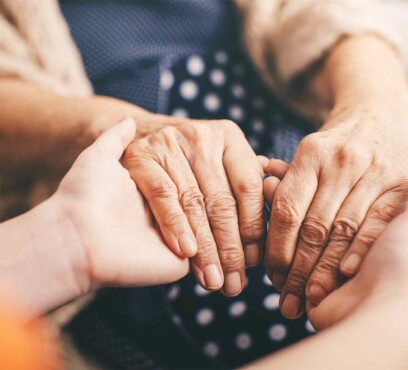What causes spasticity?

Pathophysiology and primary causes of spasticity
Spasticity is a feature of Upper motor neuron syndrome (UMNS). It is caused by damage to one or more area(s) of the central nervous system involved in controlling voluntary movement.
UMNS can be divided into two broad groups of phenomena:
- Negative: refer to what is lost, such as motor skills, strength and motor control
- Positive: caused by loss of inhibition of muscle activation and characterized by an abundance of muscle hyperactivity, such as:
- Spasticity
- Hypereflexia: increased stretch reflexes
- Clonus: uncontrollable movement of a body limb, especially the ankle
- Co-contractions: involuntary contractions of a limb or a part of the limb while the individual is actively moving another part, e.g., adduction of the shoulder while walking
- Muscle spasms

Spasticity & related conditions
The severity of muscle spasticity partly depends on the site of the upper motor neuron lesion.
Stroke
A stroke occurs when blood supply to a part of the brain is interrupted or severely reduced. If blood flow is cut off for longer than a few seconds, the brain does not receive enough blood and oxygen to fulfill its functions. Consequently, nerve cells die, causing lasting damage.
There are two major types of stroke:
- Ischemic: an ischemic stroke occurs when a brain artery is blocked by a blood clot, which has developed at the site of blockade (atherosclerosis) or developed and then moved to other parts of the body (arterial embolism)
- Hemorrhagic: a hemorrhagic stroke is caused by weak blood vessels that burst open. The escaping blood accumulates and compresses the surrounding nerve cells
Depending on the brain region affected, a stroke might lead to a vast variety of symptoms such as:
- Inability to move the upper and/or lower limb on one side of the body (hemiplegia)
- Incapability to understand or formulate speech (aphasia)
- Visual disturbances
- Spasticity on one side of the body (spastic hemiplegia)
Symptoms can be:
- Transient: a transient ischemic attack may last between few seconds and hours. These events are an alert that should lead to an immediate consultation
- Permanent: these symptoms usually improve over time, especially when an appropriate rehabilitation program is set
Spasticity affects about one quarter of stroke survivors sometime after the stroke.6 According to the study, 45% of stroke survivors could expect to have developed spasticity three months after the stroke, with 35% experiencing spasticity one year after the stroke.7 Furthermore, 32% of survivors could expect spasticity within one month, 22% between one to three months, 26% between three to six months and 24% over six months later.6
Multiple sclerosis
Multiple sclerosis (MS) is an autoimmune disease. The immune system attacks myelin, the fatty protective sheath that surrounds the neurons of the central nervous system (similar to the isolation around an electric cable), by secreting toxins that cause inflammation and swelling of the myelin sheath. The inflammation blocks the passage of messages along the neuron. In addition, the immune system also breaks down the myelin in a process known as demyelination.
This destructive process causes the electrical communication between neurons to become distorted, slowed down or even lost.
MS symptoms vary from one patient to another as well as within the same patient. Patients can have relapses of the disease followed by remission. After a certain number of relapses, symptoms may remain permanent.
MS can affect any part of the central nervous system, i.e., the brain or the spinal cord. If the disorder affects the motor areas in the central nervous system, connections between the brain and the muscles are disturbed and this can lead to spasticity.
Other frequent symptoms are:
- Balance impairment
- Coordination difficulties
- Bladder dysfunction
- Visual impairment
Traumatic brain injuries and spinal cord injury
Traumatic brain injury causes substantial disability and mortality, especially among young adults. It occurs when a sudden trauma damages the brain and disrupts normal brain function.
Brain damage can be caused by:
- Oxygen deficiency
- Encephalitis: infection of the brain
- Meningitis: infection of the covering of the brain and spinal cord
The main causes of traumatic brain injury are road traffic accidents and falls.
Traumatic brain injury symptoms can impact individuals in physical, psychological, cognitive, emotional, and social ways. Upper motor neuron syndrome (UMNS) is a common complication in moderate or severe cases meaning the likelihood of epileptic seizures, cognitive decline and spasticity can be very high.1 2
Traumatic brain injury results in development of spasticity in up to 85% of those affected.2
Although well-protected by the vertebrae of the spinal column, the spinal cord can be damaged in many ways. Most spinal cord injuries occur as a result of road traffic accidents, sports injuries, physical altercations, or falls (the latter predominantly in elderly persons).
A spinal cord injury can disrupt communication between the brain and the part of the spinal cord below the injury. Depending on the extent of damage, spasticity is a form of muscle overactivity that occurs when this happens.
After spinal cord injury, 65% to 74% of patients are reported to have spasticity, and 35% to 45% of patients have spasticity that is troublesome or problematic.3 4
Injuries to the spinal cord can cause loss of:
- Muscle function
- Sensation in the body below the level of injury
- Control of the bowels and bladder
- Normal sexual function
Spinal cord injuries in the upper neck can cause difficulty breathing and may require the use of a breathing machine or ventilator.
Cerebral palsy
Cerebral palsy is caused by damage to the motor control centers of the developing brain and can occur during pregnancy, childbirth, or postpartum, up to three years later.
The damage to the motor control center can have various causes such as:
- Accident during pregnancy
- Drug abuse by the pregnant mother
- Infections
- Birth malformation
- Abnormal brain development
- Arterial malformation
Cerebral palsy causes physical impairment as seen in the upper motor neuron syndrome, including spasticity.
Spastic cerebral palsy is the most common type of cerebral palsy, with spasticity found in 70% of people with cerebral palsy aged 2 to 20 years5, resulting in stiff muscles and awkward movements.
Among people with cerebral palsy and spasticity, quadriplegia is most common (in 33%), then hemiplegia (21%), diplegia (16%) and monoplegia (0.1%).5 Hemiplegic spastic cerebral palsy usually affects the arm and hand on one side of the body, but it can include the leg.
Balance, posture and coordination can also be affected.
References
1Maas AIR, Menon DK, Manley GT, Abrams M, Åkerlund C, Andelic N, Aries M, Bashford T, Bell MJ, Bodien YG, Brett BL, Büki A, Chesnut RM, Citerio G, Clark D, Clasby B, Cooper DJ, Czeiter E, Czosnyka M, Dams-O’Connor K, De Keyser V, Diaz-Arrastia R, Ercole A, van Essen TA, Falvey É, Ferguson AR, Figaji A, Fitzgerald M, Foreman B, Gantner D, Gao G, Giacino J, Gravesteijn B, Guiza F, Gupta D, Gurnell M, Haagsma JA, Hammond FM, Hawryluk G, Hutchinson P, van der Jagt M, Jain S, Jain S, Jiang JY, Kent H, Kolias A, Kompanje EJO, Lecky F, Lingsma HF, Maegele M, Majdan M, Markowitz A, McCrea M, Meyfroidt G, Mikoli? A, Mondello S, Mukherjee P, Nelson D, Nelson LD, Newcombe V, Okonkwo D, Oreši? M, Peul W, Pisic? D, Polinder S, Ponsford J, Puybasset L, Raj R, Robba C, Røe C, Rosand J, Schueler P, Sharp DJ, Smielewski P, Stein MB, von Steinbüchel N, Stewart W, Steyerberg EW, Stocchetti N, Temkin N, Tenovuo O, Theadom A, Thomas I, Espin AT, Turgeon AF, Unterberg A, Van Praag D, van Veen E, Verheyden J, Vyvere TV, Wang KKW, Wiegers EJA, Williams WH, Wilson L, Wisniewski SR, Younsi A, Yue JK, Yuh EL, Zeiler FA, Zeldovich M, Zemek R; InTBIR Participants and Investigators. Traumatic brain injury: progress and challenges in prevention, clinical care, and research. Lancet Neurol. 2022 Nov;21(11):1004-60.
2Enslin JMN, Rohlwink UK, Figaji A. Management of Spasticity After Traumatic Brain Injury in Children. Front Neurol. 2020 Feb 21;11:126.
3Holtz KA, Lipson R, Noonan VK, Kwon BK, Mills PB. Prevalence and Effect of Problematic Spasticity After Traumatic Spinal Cord Injury. Arch Phys Med Rehabil. 2017 Jun;98(6):1132-8.
4Skoog B., Jakobsson K.E. Prevalence of Spasticity and Below-Level Neuropathic Pain Related to Spinal Cord Injury Level and Damage to the Lower Spinal Segments. J. Rehabil. Med. Clin. Commun. 2020;3:1000039. doi: 10.2340/20030711-1000039.
5Pulgar S, Bains S, Gooch J, Chambers H, Noritz GH, Wright E, Sawhney TG, Pyenson B, Ferro C. Prevalence, Patterns, and Cost of Care for Children with Cerebral Palsy Enrolled in Medicaid Managed Care. J Manag Care Spec Pharm. 2019 Jul;25(7):817-22.
6Zeng H, Chen J, Guo Y, Tan S. Prevalence and Risk Factors for Spasticity After Stroke: A Systematic Review and Meta-Analysis. Front Neurol. 2021 Jan 20;11:616097.
7Schinwelski MJ, Sitek EJ, Wąż P, Sławek JW. Prevalence and predictors of post-stroke spasticity and its impact on daily living and quality of life. Neurol Neurochir Pol. 2019;53(6):449-57.


